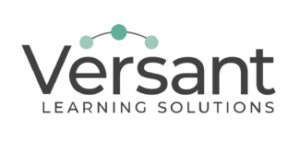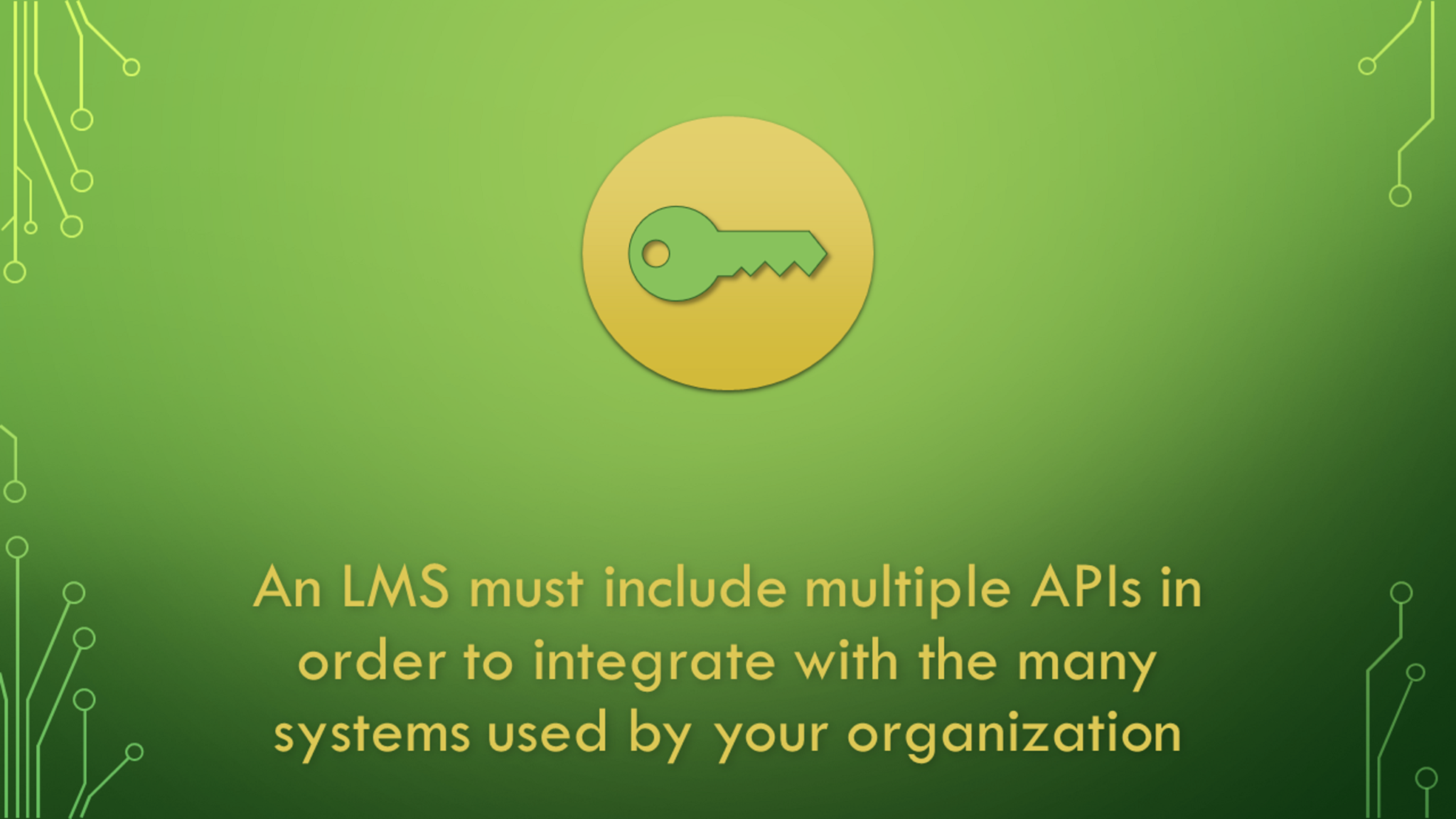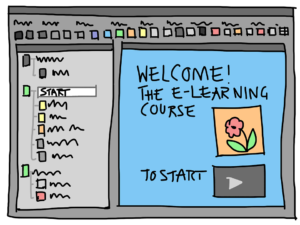
If yours is a mid- or large-sized health care company, you likely have access to (and passwords for) multiple learning management systems (LMS): HR, Compliance, Medical Affairs training, etc. What do you think of them? Is navigating the dashboard and tasks intuitive? How responsive is the system while taking courses? Can you access it from multiple devices? If one (or many) of your organization’s learning management systems make you want to pull your hair out, it’s probably because 1) the system was selected 5 to 10 years ago (aka The Dark Ages), and/or 2) the decision-makers did not understand what features were important when making their selection.
This blog is the first in a series that will break down the basics of a Learning Management System. Armed with this knowledge, you’ll be able to compare the many LMS options and ask their providers smart questions to make informed decisions. Too often, LMS selection is based on price, looks, and popularity. “The dashboard looks great, lots of companies use it, and it’s affordable!” It’s a no-brainer, right? Well, yes, but only if you mean that term literally.
First, the good news: Learning Management Systems (LMS) are improving exponentially to keep pace with increasing demand. It’s no surprise that, in the training industry, technology use overall was up in 2017, compared to the prior year. But did you know that the most commonly used technology was – you guessed it! – learning management systems? LMS use increased from 74% in 2016 to 86% percent in 2017. That’s an increase of 12%!
Now for the bad news: with improved quality and functionality come more features (which is NOT the bad news part). The bad news is that means you have to learn about and understand all those new features and the acronyms, lingo, and intimidating terminology that come with them.
A CRITICAL QUESTION
TO ASK AN LMS VENDOR
“Does your LMS have APIs that can integrate with third-party systems?”
Wait! Don’t leave! By the time you’re done reading this, you will understand what an API is and why an LMS should – must – have them. We’re not going back to Big Bang, but let’s back up a couple of steps.
FIRST:
Picture the internet as a system of interconnected remote servers. Every single thing you see on the internet is stored somewhere on a remote server. Here’s our icon for this vast network of interconnected servers (aka the internet):
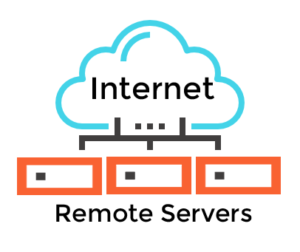
SECOND:
An API (Application Programming Interface) is a part of a remote server. It’s the part of the server that receives requests and sends responses. It’s only job is to “interface” with another remote server (it’s in the name!). Here is our icon for an API:
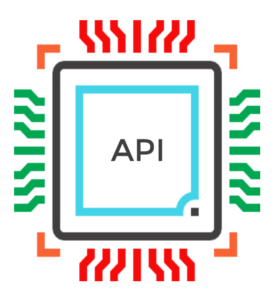
THIRD:
Now that we understand that an API receives requests and sends responses, let’s further define the two parties involved in an exchange.
The Client: Let’s say Remote Server A sends a request to Remote Server B, (or it can send a request to another section of itself, but let’s not get into the weeds). Server A is referred to as “the client.”
The API: When Remote Server A sends a request to Server B, it’s the API of Server B that’s responsible for receiving the client’s request and sending back a response. Here’s what that looks like using our icons: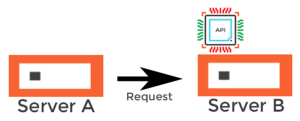
Real world example: You click on a YouTube video while on Facebook. The client (Facebook) sends a request to YouTube to play the video. YouTube’s API receives the request and sends back a response that allows the video to play.
The API Part Deux: Thus far we’ve been focusing on the response part of an API’s job. But it’s important to understand that, in addition to an API sending data (the response) to a system, it can also gather data from the system. That is denoted by the red and green lines in the icon. Here the red color signifies data coming in and the green signifies data being sent out.
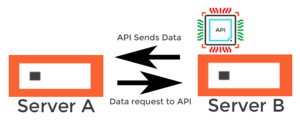
Real world example: Your HR department’s system automatically sends information about a newly hired MSL to the Medical Affairs LMS. The LMS receives information about the new hire (and many, many hours of training begin). After some specified period, HR sends a request to get the new hire’s training progress. The LMS sends the new hire’s training data to HR.
Hopefully, that last example gave you some idea about why it’s so important that an LMS have APIs: so that it can talk to the other systems used by the organization. If an LMS doesn’t have APIs or has just a few, it’s basically siloed. Sure, you can probably generate a few nice looking, pre-made reports, but you can’t integrate or send any of those data to other systems.
If you’re part of a large organization, it’s a good idea to contact your IT department and ask them about other systems with which your LMS may need to interface. You should also ask the LMS vendors about what integrations they offer.
Real world example: Your organizations’ Compliance Department uses NiftyLMS for their training, but you are considering using LMStastic for your Medical Affairs training. The smart question to ask the LMStastic vendor is whether their LMS can integrate with NiftyLMS.
Below is a list of other important integrations that an LMS for Medical Affairs training should possess:
- Veeva/Salesforce.com
- Google analytics
- Microsoft
- Organizational social media platforms (Yammer, Messenger, or Skype)
- Conferencing platforms (WebEx, Skype, Adobe Presenter)
- Single Sign-On (wouldn’t that be amazing?!)
- Javascript (enables things like embedded chat, monitoring, and analytics)
In Part II of this series, we will explore another smart question to ask an LMS vendor. If there’s a question/issue you’d like me to cover, please let me know. Stay tuned!
References:
- https://trainingmag.com/trgmag-article/2017-training-industry-report/
- https://medium.freecodecamp.org/what-is-an-api-in-english-please-b880a3214a82
- https://elearningindustry.com/important-feature-for-training-automation-lms-api-single
- http://www.netdimensions.com/blog/2017/10/10/lms-integration-why-are-apis-so-important/#.Wwh9Pu4vxhE
- https://elearningindustry.com/must-have-lms-integration-guide
